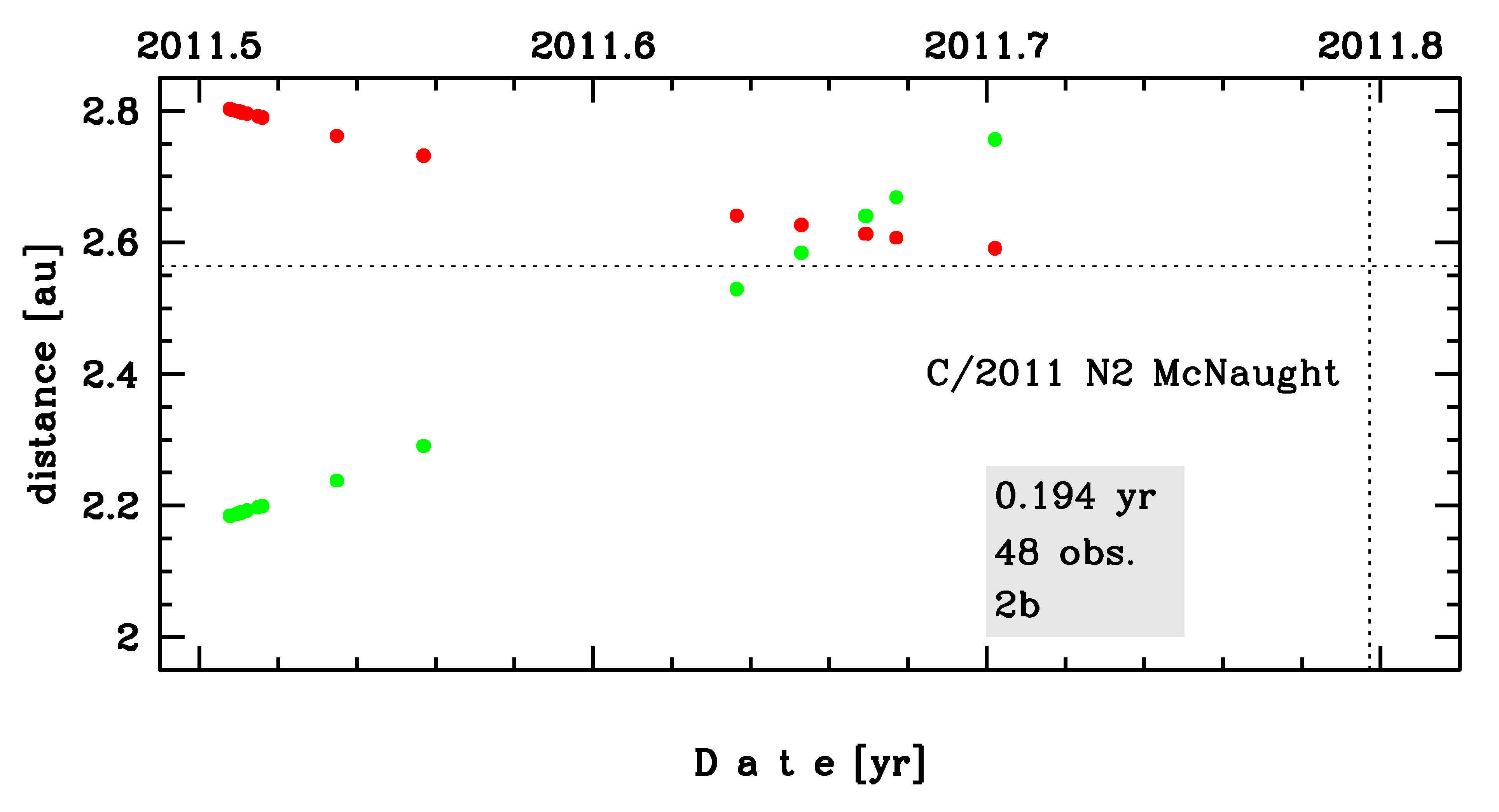C/2011 N2 McNaught
more info
Comet C/2011 N2 was discovered on 4 July 2011 by Robert H. McNaught (Siding Spring), that is 3.5 months before its perihelion passage. It was observed until 19 September 2011.
Comet had its closest approach to the Earth on 8 June 2011 (2.120 au), about a month before its discovery.
Solution given here is based on pre-perihelion data spanning over 0.194 yr in a range of heliocentric distances from 2.80 au to 2.59 au.
Original value of 1/a is negative; however within its uncertainty of 1 sigma this comet can came from the Oort Cloud.
C/2011 N2 was observed only before peryhelion; however, the future orbit is given here.
See also Królikowska 2020.
Comet had its closest approach to the Earth on 8 June 2011 (2.120 au), about a month before its discovery.
Solution given here is based on pre-perihelion data spanning over 0.194 yr in a range of heliocentric distances from 2.80 au to 2.59 au.
Original value of 1/a is negative; however within its uncertainty of 1 sigma this comet can came from the Oort Cloud.
C/2011 N2 was observed only before peryhelion; however, the future orbit is given here.
See also Królikowska 2020.
| solution description | ||
|---|---|---|
| number of observations | 48 | |
| data interval | 2011 07 04 – 2011 09 13 | |
| data type | observed only before perihelion (PRE) | |
| data arc selection | entire data set (STD) | |
| range of heliocentric distances | 2.8 au – 2.59au | |
| detectability of NG effects in the comet's motion | NG effects not determinable | |
| type of model of motion | GR - gravitational orbit | |
| data weighting | YES | |
| number of residuals | 92 | |
| RMS [arcseconds] | 0.37 | |
| orbit quality class | 2b | |
| orbital elements (heliocentric ecliptic J2000) | ||
|---|---|---|
| Epoch | 2011 10 06 | |
| perihelion date | 2011 10 18.74595861 | ± 0.00490596 |
| perihelion distance [au] | 2.56333607 | ± 0.00005656 |
| eccentricity | 0.99959199 | ± 0.00013415 |
| argument of perihelion [°] | 357.042726 | ± 0.001734 |
| ascending node [°] | 274.018674 | ± 0.000730 |
| inclination [°] | 33.675813 | ± 0.00046 |
| reciprocal semi-major axis [10-6 au-1] | 159.17 | ± 52.34 |
